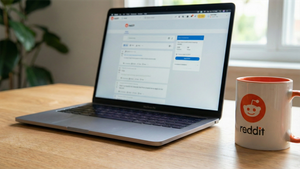
The robust U.S. labor market, a cornerstone of post-pandemic economic recovery, is finally showing definitive signs of cooling. Recent data indicates a significant moderation in nonfarm payroll figures, accompanied by a slowdown in wage growth. This shift signals a potential rebalancing of supply and demand for labor, with immediate implications for inflation, monetary policy, and, crucially, the trajectory of corporate earnings and consumer spending.
This slowdown is a closely watched development for investors and policymakers alike. A gradual cooling could be a welcome sign for the Federal Reserve, suggesting that inflationary pressures are easing without triggering a severe recession. However, a sharper-than-expected deceleration could raise concerns about economic contraction, prompting businesses to reassess investment and hiring plans, and ultimately influencing the performance of major stock indices.
The Shift: Moderation in Job Gains and Wage Growth
The most recent labor market reports have painted a clear picture of moderation. Nonfarm payrolls, while still positive, have fallen below previous quarters' averages, indicating a deceleration in job creation. This trend is further underscored by a notable easing in average hourly earnings, which, after months of rapid acceleration, are now growing at a more sustainable pace. These figures are critical barometers for the overall health of the U.S. economy, providing insights into consumer confidence and purchasing power.
This cooling trend has been anticipated by many economists and financial analysts. For several quarters, the labor market has been exceptionally tight, characterized by record-low unemployment and intense competition for talent, which drove up wages and contributed to inflationary pressures. The Federal Reserve's aggressive interest rate hikes over the past year and a half were largely aimed at tempering this demand-side inflation, and the recent labor market data suggests these efforts are beginning to bear fruit. Key stakeholders involved in this data release include the Bureau of Labor Statistics (BLS), which publishes the monthly jobs report, and the Federal Reserve, whose monetary policy decisions are heavily influenced by these statistics. Initial market reactions have been mixed; while a controlled slowdown is generally perceived positively as it may avert further rate hikes, any indication of a rapid deterioration could trigger widespread selling.
Navigating the Headwinds: Potential Winners and Losers
A cooling labor market will inevitably create a divergence in performance across various sectors and companies. Businesses with high labor costs, such as those in the service industry or manufacturing, may see some relief in terms of wage pressure. Conversely, companies heavily reliant on robust consumer spending could face headwinds if job uncertainty or slower wage growth leads consumers to tighten their belts.
On the winning side, companies that have been struggling with high labor turnover and elevated wage bills, particularly those with a significant hourly workforce, might see improved profit margins. Retailers like Walmart (NYSE: WMT) and Amazon (NASDAQ: AMZN), for example, could benefit from a more stable labor pool and less aggressive wage demands. Similarly, industries where automation can substitute for labor, such as parts of manufacturing or logistics, may find an opportunity to enhance efficiency without facing the same labor market constraints. Tech companies, which have already undergone significant layoffs in recent times, might find it easier to re-hire at more competitive rates as the talent pool expands. On the other hand, luxury goods retailers or companies offering discretionary services, such as those in the travel and leisure sector like Marriott International (NASDAQ: MAR) or Carnival Corporation (NYSE: CCL), could see a slowdown in demand if consumers become more cautious with their spending. Small businesses, which often operate on tighter margins and are more susceptible to shifts in consumer behavior, may also face challenges. Companies that rely on robust growth in employment to drive their business, such as staffing agencies or professional development platforms, could also experience a deceleration in their revenue streams.
Broader Implications and Industry-Wide Ripples
The moderation in the U.S. labor market extends beyond individual corporate balance sheets, casting a wide net of implications across various industries and the broader economy. This trend aligns with broader shifts in global economic activity, where supply chain normalization and tighter monetary policies worldwide are collectively contributing to a general slowdown. The U.S. economy, while still showing resilience, is not immune to these global forces, and a cooling labor market can be seen as a natural recalibration following years of unprecedented growth and pandemic-induced distortions.
The ripple effects could be significant. Financial institutions, including major banks like JPMorgan Chase (NYSE: JPM) and Bank of America (NYSE: BAC), will closely monitor loan default rates and consumer credit performance, which are intrinsically linked to employment stability and wage growth. A slowdown could also prompt regulatory scrutiny on areas like unemployment benefits and social safety nets, potentially leading to policy discussions about economic stimulus or support programs. Historically, periods of rapid labor market cooling, if not managed effectively, have preceded recessions, making this a critical juncture for policymakers. However, comparisons to past events must consider the unique post-pandemic context, including elevated savings rates and a still-resilient consumer balance sheet, which may offer some buffer against a severe downturn. The housing market, already sensitive to interest rates, could see further shifts as employment prospects influence buyer confidence and mortgage demand.
What Comes Next: Navigating the Evolving Landscape
The path forward for the U.S. economy and the stock market in light of a cooling labor market is fraught with both opportunities and challenges. In the short term, investors will be keenly watching upcoming inflation data and Federal Reserve statements for any clues about the pace of future interest rate decisions. A sustained cooling of the labor market without a sharp rise in unemployment could solidify the "soft landing" narrative, where inflation gradually returns to target without a significant economic contraction. This scenario would likely be positive for equities, as it removes the specter of aggressive rate hikes.
However, a more rapid or severe deterioration in the labor market could push the economy towards a recession, forcing businesses to undertake strategic pivots. Companies may focus on cost-cutting, efficiency gains, and protecting existing revenue streams rather than pursuing aggressive expansion. This environment could create market opportunities for defensive stocks, companies with strong balance sheets, and those that thrive during economic downturns, such as discount retailers or utilities. Long-term possibilities depend on how quickly and effectively the economy adapts. If the cooling is a rebalancing act, it could lead to a more sustainable growth trajectory with healthier wage and price dynamics. Conversely, a prolonged period of high unemployment could stunt innovation and long-term economic potential. Investors should prepare for increased volatility and a need for agile portfolio management.
Conclusion: A Balancing Act for the Economy
The cooling U.S. labor market represents a pivotal moment for the economy, signifying a shift from a period of intense overheating to a more measured, perhaps sustainable, pace. The key takeaway is that moderation, rather than collapse, is currently the dominant theme, offering a glimmer of hope for a "soft landing" engineered by the Federal Reserve. This period of rebalancing will undoubtedly create winners and losers, reshaping the competitive landscape for public companies and requiring strategic adaptations across various industries.
Moving forward, investors should remain vigilant, closely monitoring economic indicators such as monthly jobs reports, inflation figures (Consumer Price Index and Personal Consumption Expenditures), and consumer confidence surveys. The market will be particularly sensitive to any rhetoric from Federal Reserve officials regarding future monetary policy. Companies with strong fundamentals, resilient business models, and a proven ability to manage costs will likely navigate this environment more effectively. While the immediate future presents uncertainties, a successful recalibration of the labor market could ultimately pave the way for a more stable and predictable economic environment in the long run, albeit with a different set of growth dynamics than those witnessed in recent years.




